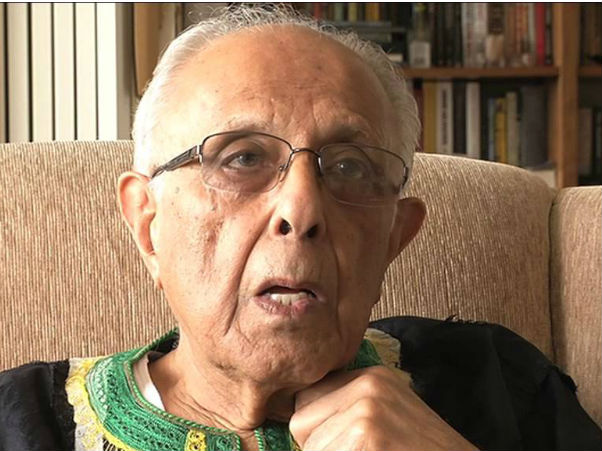The Ahmed Kathrada Exhibition has opened its doors to the public at Constitutional Hill, Johannesburg. The Ahmed Kathrada Foundation (AKF) launched the exhibition on Sunday (August 21) in memory of the late anti-apartheid activist Ahmed Kathrada.
The opening coincided with what would have been Kathrada’s 93rd birthday. He died from complications of a cerebral embolism in 2017. The Foundation has since worked to honour his legacy through a series of projects, the exhibition being the latest.
Kathrada spent 26 years in prison as one of the Rivonia trialists. The exhibition commemorates Kathrada’s legacy through stories, pictures, artefacts and his epistles to family and friends during his incarceration.
Neeshan Bolton, who developed a rapport with Kathrada following his incarceration, told Salaamedia that he continues to learn from his legacy.
“I’m beginning to discover that there’s [much about] him that I didn’t know as I go through his letters and a lot of his writings and so forth. There are parts of his life that I wish I had probed much more, particularly the depth of activism that landed him up in jail,” he said.
SMread: Thulsie Twins eager to return to normal life
Political prisoner
Ahmed Kathrada was a renowned political prisoner. In July 1963, Kathrada was arrested at the headquarters of Umkhonto we Sizwe in Rivonia, near Johannesburg.
Although not a member of Umkhonto we Sizwe, he became one of the accused in the Rivonia Trial, which saw him sentenced to life in prison. He spent 18 years at Robben Island Prison, Cape Town, before being transferred to Pollsmoor Prison. He was eventually released in 1989.
According to Bolton, Kathrada lived a life that comprised more than just his incarceration. He said Kathrada’s prior activism and personal relationships were often overlooked.
“We tend to think of Kathrada primarily as a political prisoner, but not as probably one of the country’s foremost activists which is why he then landed up in prison,” he said, adding that “understanding that activism is one part of it but his personal relationships with a range of people – that is just incredible to go through.”
“Now that I’ve started going through a lot of his writings has just led me to understand that
there’s much of his life that I didn’t understand and perhaps never will. We didn’t use the opportunity sufficiently to probe aspects of his life that we are now beginning to uncover,” said Bolton.
SMread: NGOs commemorate women of Sharpeville
Ahmed Kathrada Exhibition
As Bolton explained, the Ahmed Kathrada Exhibition is a long-term undertaking that forms part of a broader history project. It seeks to tell the story of Kathrada along with the broader history of the country.
“We needed to tell his story and have it located permanently in one place that’s accessible to the public, but also where the Foundation would be able to take organised groups of people through it,” he said.
“In time,” explained Bolton, the plan was “to link it with a history trail that would go from Kholvad House to Constitutional Hill, Lily’s Leaf and his gravesite at West Park.”
Bolton said the best way for people to learn about history was to walk through it and experience it, rather than merely read about it.
